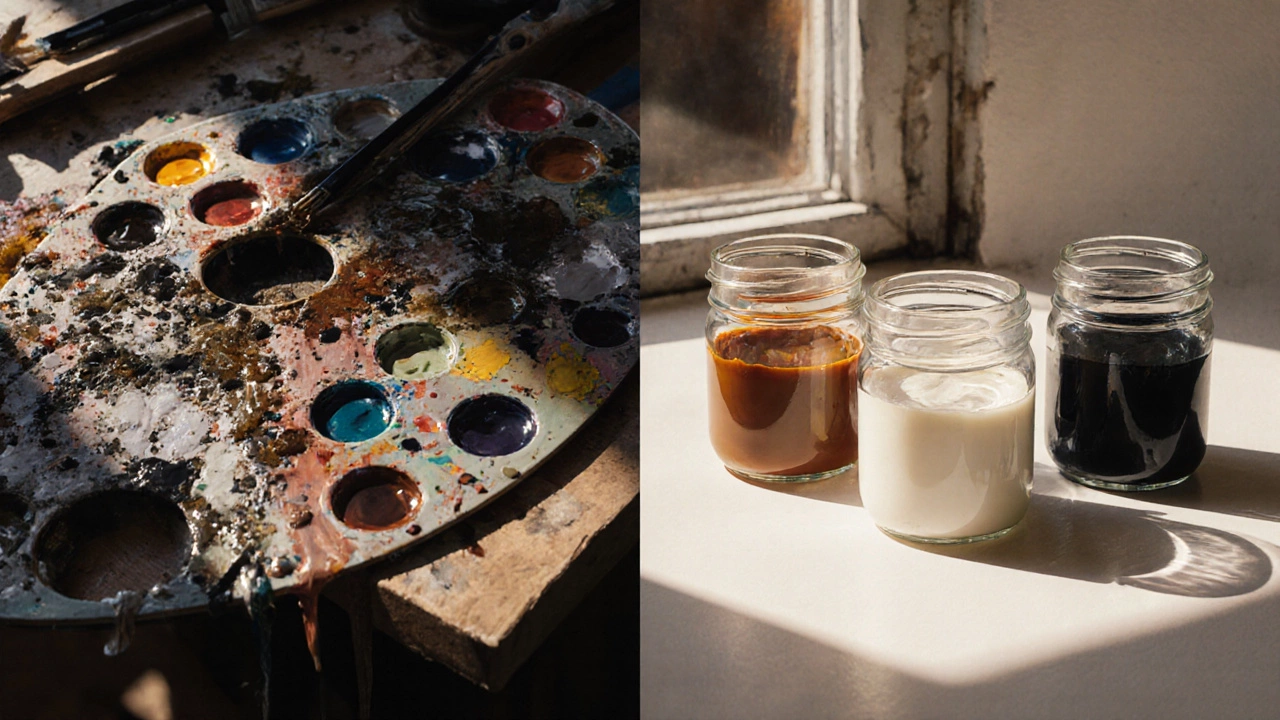Understanding the Three-Bucket Rule in Oil Painting
14 Oct 2025Learn what the three-bucket rule is, how to set it up, and why it improves value control and color consistency in oil painting.
Continue reading...When working with color mixing, the process of blending pigments, paints, or digital values to create new hues and shades. Also known as color blending, it forms the backbone of every visual project, from a canvas to a garden layout. color mixing isn’t just for painters – designers, sculptors, and digital artists all rely on it to bring ideas to life.
One of the first tools you’ll meet is the complementary colors, pairs of hues opposite each other on the color wheel that boost contrast and visual interest when mixed carefully. Knowing how blue and orange, or red and green, interact lets you avoid muddied results and instead create vibrant, balanced tones. This knowledge directly shapes your color palette, a curated set of colors selected for a specific project or mood. A well‑planned palette guides the mixing process, ensuring every shade supports the overall story you want to tell.
Another core concept is hue, the attribute of a color that defines its position on the color wheel, such as red, blue, or yellow. Hue interacts with saturation (how intense a color feels) and value (how light or dark it is). Mastering this trio lets you predict how two pigments will behave before you even touch the brush. For example, mixing a high‑saturation yellow with a low‑value blue yields a rich green that’s both deep and vivid – a trick often highlighted in landscape painting rules and contemporary style guides.
From the "Complementary Colors for Landscaping" guide to the "Alla Prima" wet‑on‑wet technique, every article in this collection shows a facet of color mixing in action. Sculptors benefit when they understand how pigment affects clay or resin, while digital artists rely on precise RGB or HEX values to keep consistency across screens. Even street art creators use color theory to make a mural pop in daylight and nighttime. By grasping the relationships – "color mixing encompasses combining primary hues", "color mixing requires understanding hue, saturation, and value", and "complementary colors influence color mixing outcomes" – you can move from accidental blends to intentional, expressive palettes.
Below you’ll discover hands‑on tips, historical context, and step‑by‑step workflows that turn theory into practice. Whether you’re fixing a muddy oil paint mistake, choosing pigments for a cheap sculpture, or building a vibrant brand identity, the posts here equip you with the language and tools to make smarter color decisions. Dive into the articles and see how mastering color mixing can lift your work from ordinary to unforgettable.

Learn what the three-bucket rule is, how to set it up, and why it improves value control and color consistency in oil painting.
Continue reading...